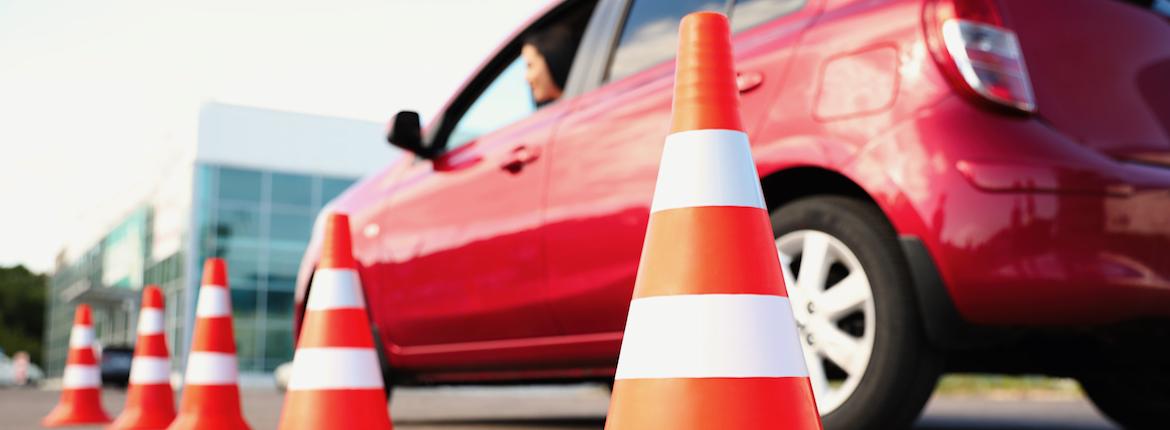Most drivers have a tendency to overestimate their driving ability and underestimate risk.This is especially true when learning to drive or newly licensed, but also applies to experienced drivers as complacency starts to creep in. Sound familiar?
Defensive driving courses aim to increase overall driver awareness and better manage safety and risk on NewZealand roads. A defensive driver is competent in identifying, assessing and reducing risks in the driving environment.
Experience counts, of course, but what has more immediate impact is expert guidance from a professional. I joined a motivated group of novice drivers on an AA Defensive Driving Course to consider every kind of driving risk. Here are some of the keys points I took from the course; drivers of all ages and stages could observe these to make their time on our roads safer and more rewarding.
 If you’re focused on safety, smoothness and economy, you’ll always scan the road ahead for potential interruptions to your progress. Eco-driving techniques include searching ahead for up to 12 seconds, applying sensitive inputs when accelerating and braking, observing speed limits and only using the required engine revs. Think of an egg between your foot and accelerator, or transporting a new television set on the back seat. But be reasonable: don’t fear using the accelerator, using the air-con on a hot day, or having to stop at orange lights.
If you’re focused on safety, smoothness and economy, you’ll always scan the road ahead for potential interruptions to your progress. Eco-driving techniques include searching ahead for up to 12 seconds, applying sensitive inputs when accelerating and braking, observing speed limits and only using the required engine revs. Think of an egg between your foot and accelerator, or transporting a new television set on the back seat. But be reasonable: don’t fear using the accelerator, using the air-con on a hot day, or having to stop at orange lights.
- Three main types of distraction are capable of derailing any driver at any time. They might be outside the vehicle (visual distractions), inside the vehicle (manual and visual), or inside a driver’s mind (cognitive).
- If you recognise that you’re in a rush, sunstrike is affecting your visibility, the roads are very busy, it’s dark, the weather is poor, the roads are wet, you’ve got boisterous passengers… you’re already minimising risks by identifying them. Managing personal risk – frame of mind, distractions and heightened emotions – can be just as challenging. Fatigue is another biggie that can result in delayed driver responses and poor decision making.
- Driving against the clock creates pressure and increases the temptation to bend rules. Be realistic: it won’t always take 20 minutes to drive across town to your workplace or eight minutes to drive to a friend’s house.
- The two-second rule describes what is regarded as a safe following distance on the open road. At 100km/h, those two seconds equate to 55m of travel. At 50km/h, it’s 27.5m. Double that in wet or greasy conditions and reduce your approach speed to roundabouts and intersections.
- Driver reaction time, road conditions, tyre condition, reduced visibility and vehicle capability can all increase stopping distances. Slow down in the wet and increase following distances because tyre contact patches are less effective, and those of worn tyres especially so.
- Collision avoidance techniques include scanning, frequent mirror checks, managing distractions, maintaining safe following distances and identifying an escape route that involves focusing on where to steer to avoid a crash.
- One way to instantly improve your driving is to look further down the road. Look well ahead to where you want to go in order to remain in the centre of your lane and to better anticipate hazards or traffic light changes.
- Indicators are your key communication tool. They broadcast your intention to turn, change lanes or overtake, but they don’t grant you the right to do so. Use them earlier so other drivers have time and space to react and allow you to complete your intended move.
- When being pressured by a tailgater, or the driver behind you is on their phone, buy yourself space by increasing the distance to the car ahead. You can’t afford to brake suddenly and risk being sandwiched in a nose-to-tail incident.
- Putting your lights on is a bright idea, especially in silver or grey cars, to stand out on a grey road on a grey day against a grey sky. Your own vision window is 180 degrees when stationary but reduces incrementally according to speed. A clean windscreen (both inside and out) is a big factor in maintaining clear vision in all weather conditions.
- A correct seating position involves a clear line of sight above the steering wheel, hands at nine and three, pedals pressed by ball of foot, weight of each arm split between wrist and shoulder, and right thigh horizontal, so you’re braking with quad muscles, not an ankle flex.
- Work out a plan for safely managing your phone and stick to it. We all know that messaging while driving is especially dangerous. Hands-free is the answer if you must make or receive calls while driving.
- A very good driver tends to be a very good passenger, one that remains engaged, sets a positive tone, respects a driver’s need to concentrate, but stops short of over-involving themselves.
Reported by Andrew Kerr for our AA Directions Spring 2021 issue




